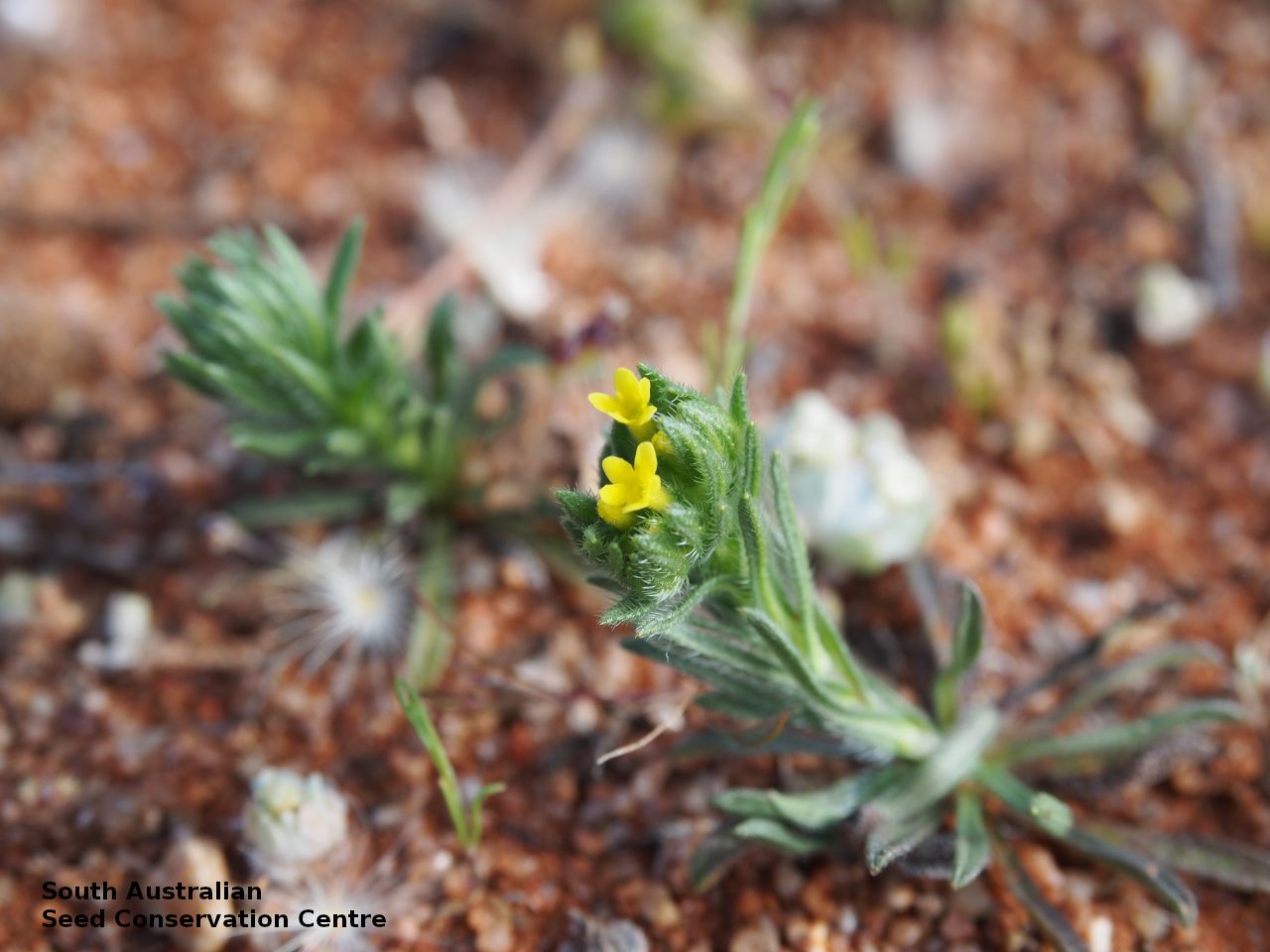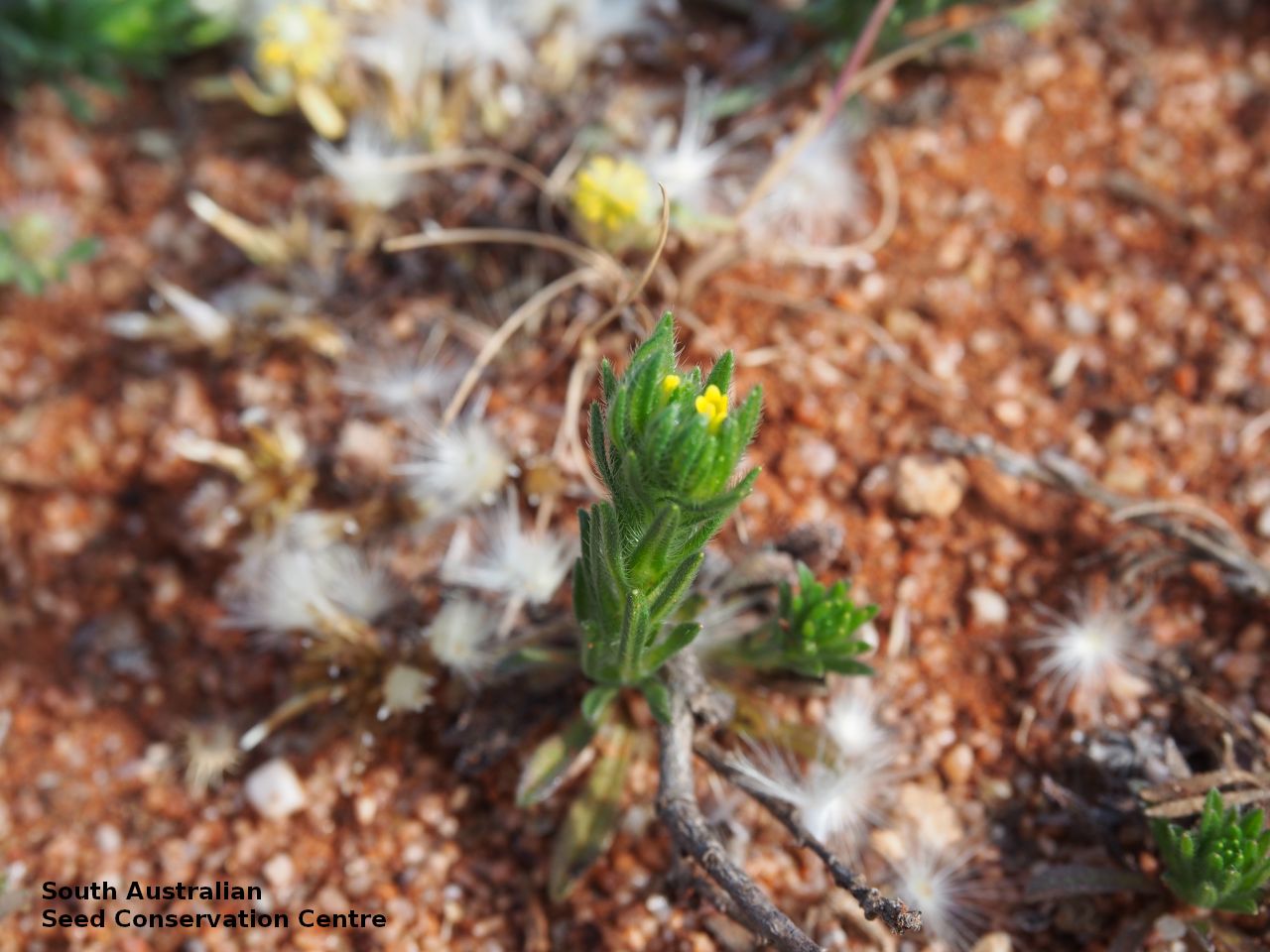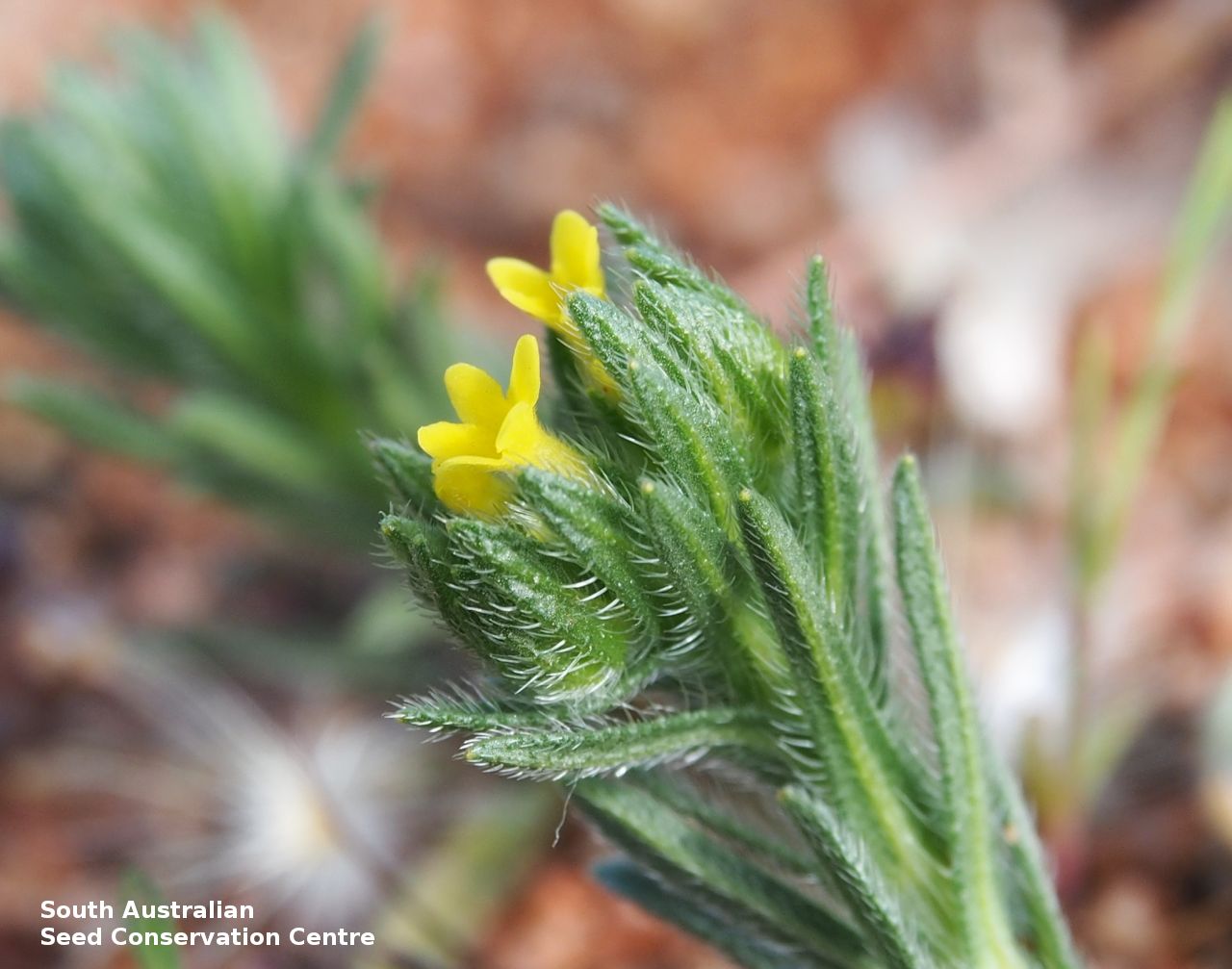




Botanical art
Prior names
Lithospermum apulum
Myosotis apula
Rhytispermum apulum
Common names
Gromwell
Hairy Sheepweed
Etymology
Neatostema from the Greek 'neatos' meaning the lowest and 'sterna' meaning stamen; referring to the very low position of attachment of the stamens to the corolla tube. Apulum possibly referring to where the type specimen may have been collected from, the town of apulia in Italy.
Distribution and status
Found in the southern part of South Australia, growing in sandy open areas. Also found in New South Wales and Victoria. Introduced. Common in South Australia. Uncommon in the other states.
Herbarium regions: Eastern, Eyre Peninsula, Northern Lofty, Murray, Yorke Peninsula, Southern Lofty, South Eastern, Green Adelaide
NRM regions: Eyre Peninsula, Northern and Yorke, South Australian Arid Lands, South Australian Murray-Darling Basin, South East
AVH map: SA distribution map (external link)
Plant description
Annual herb to 25 cm high with several erect branches from the base, and a well-developed tap-root with yellowish hairs on new growth. Basal leaves linear to oblanceolate, becoming shorter and lanceolate towards apex to 40 mm long and 4 mm wide. Flowers clustered at the end of stems with yellow flowers. Flowering between October and December. Fruits are brown capsule. Seed embryo type is spatulate.
Seed collection and propagation
Collect seeds between December and March. Collect mature capsule, those that are drying off, turning brown and contain dark, hard seeds inside. Can collect individual fruit cluster or break off whole heads. Place the capsules in a tray and leave to dry for one to two weeks. Then rub the fruits gently by hand to dislodge the seeds. Use a sieve to separate the unwanted material. Store the seeds with a desiccant such as dried silica beads or dry rice, in an air tight container in a cool and dry place.